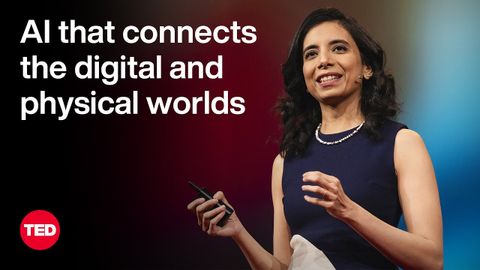デジタルと物理の世界をつなぐAI|アニマ・アナンドクマール|TED (AI That Connects the Digital and Physical Worlds | Anima Anandkumar | TED)
Nina XDSC が 2024 年 07 月 26 日 に投稿  この条件に一致する単語はありません
この条件に一致する単語はありませんUS /ˈmʌltəpəl/
・
UK /ˈmʌltɪpl/
- adj.複数の;多様な;多発性の;多重の
- n. (c.)倍数;多数;倍率
- pron.多数
US /ˈfɪzɪkəl/
・
UK /ˈfɪzɪkl/
- n. (c.)身体検査 : 健康診断
- adj.身体の : 肉体の;物質的な;物理的な
- n.体育
- n. (c./u.)大きさや格など;うろこ;はかり;音階;規模
- v.t./i.(縮尺比に従って)拡大する : 縮小する;登る;魚のうろこを取る
- v.t.取り組む;タックルする : 組みつく
- n. (c./u.)釣りの道具;索具 : 綱具;タックル
エネルギーを使用
すべての単語を解除
発音・解説・フィルター機能を解除
